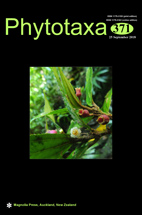Abstract
The species of the family Massariaceae have been reported as hemibiotrophs, saprotrophs or weak pathogens. Massarioramusculicols chiangraiensis gen. et sp. nov. (Massariaceae) is introduced in this study to accommodate a taxon isolated from dead twigs of an unknown host, collected in Thailand. Phylogenetic analysis of large subunit (LSU) rRNA sequence data and morphological studies show the relationships of M. chiangraiensis with other genera in Massariaceae. Three genera Massaria, Massarioramusculicola and Neomassaria are accepted in Massariaceae and a key to genera of the family is provided. The genus Massarioramusculicola is clearly different from Massaria, whereas the latter has larger ascomata typically firmly embedded in pseudostromatic tissues intermixed with substrate cells, often surrounded by blackened marginal zones and covered by a dark clypeus, as well as brown to dark brown, larger, 3-disto- or euseptate ascospores. Massarioramusculicola can be distinguished from Neomassaria in having a peridium with two strata comprising dark brown to hyaline cells of textura angularis, rarely branched, septate trabeculae and 3-septate ascoapores.

